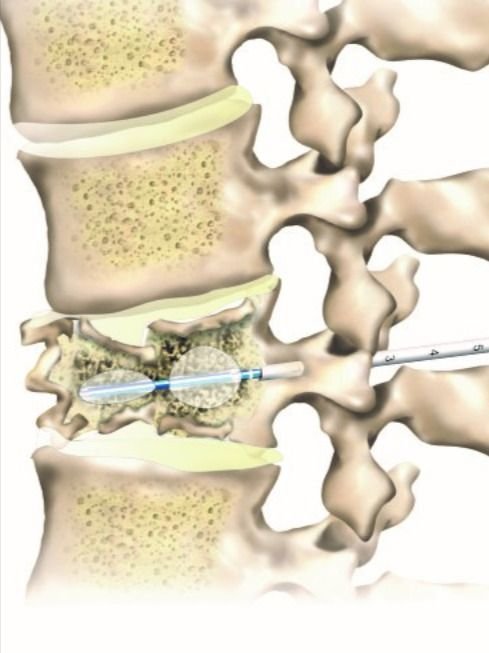How Kyphoplasty Relieves Nerve Pain: An Insight by Interventional Pain Management Doctors
Back pain is a major concern affecting millions worldwide, causing missed workdays and impacting their quality of life. As a consequence, Interventional Pain Management Doctors are constantly looking for innovative ways to help patients alleviate their pain.
One such treatment that has proven effective for nerve pain relief is kyphoplasty. This blog post delves into the details of this procedure, the causes of nerve pain, and the benefits of kyphoplasty as a treatment option.
Understanding the Causes of Back Pain
Back pain can result from various factors, such as muscle strains, herniated discs, and compression fractures. Identifying the precise cause of the pain is crucial in designing a suitable treatment plan. While muscle strains and compression fractures lead to pain, they require different treatment approaches.
Compression Fractures and Nerve Pain
Compression fractures can give rise to nerve pain. These fractures often result in kyphosis, characterized by a hunch in the back due to the decreased height between vertebrae. However, this is not the sole symptom. The compressed vertebrae may also exert pressure on the nerves, leading to symptoms such as:
Sharp, shooting pain.
Tingling sensations in the arms and/or legs.
Numbness.
Lower back pain.
Bladder or bowel leakage in severe cases of nerve damage.
Kyphoplasty: A Solution for Nerve Pain Relief
Kyphoplasty is a minimally invasive procedure specifically designed to address compression fractures and the nerve pain that stems from them. By stabilizing the affected spine area and reducing nerve pressure, kyphoplasty restores the space between the impacted vertebrae.
Procedure
During the kyphoplasty procedure, the Interventional Pain Management Doctor carefully inserts a specialized needle near the affected vertebrae, using X-ray guidance. Once the needle is accurately positioned, a medical balloon is inserted and slowly inflated. As the balloon expands, it gently lifts the vertebrae, restoring their proper height. Subsequently, a biocompatible cement is injected into the space for added stability.
Advantages of Kyphoplasty
Kyphoplasty offers numerous benefits for patients suffering from nerve pain due to compression fractures. These include:
Effective treatment of compression fractures.
Relief from nerve pain associated with compression fractures.
Swift procedure, often completed in about an hour.
Rapid alleviation of pain, with many patients reporting improvement shortly after the procedure.
Despite the procedure's speed and the prompt relief it provides, Interventional Pain Management Doctors continue to monitor patients' progress, offering post-treatment guidance and instructions to ensure a smooth recovery.
Who is a candidate for Kyphoplasty
Kyphoplasty is not suitable for all patients with back pain. Interventional Pain Management Doctors carefully assess each patient's medical history, symptoms, and diagnostic imaging to determine if kyphoplasty is the best course of action. Ideal candidates for this procedure include those with the following:
Compression fractures cause nerve pain.
Pain that has not responded to conservative treatments, such as medications, physical therapy, and lifestyle modifications.
Fractures that have not healed properly or have led to spinal instability.
Preparing for Kyphoplasty
Once a patient is deemed a suitable candidate for kyphoplasty, the Interventional Pain Management Doctor will provide detailed instructions on how to prepare for the procedure. These may include:
Avoiding certain medications that may increase the risk of bleeding.
Fasting for a specified period before the procedure.
Arranging for someone to drive the patient home after the procedure.
Post-Procedure Care and Recovery
Following kyphoplasty, patients can typically return home on the same day. However, they should adhere to the post-procedure guidelines provided by their Interventional Pain Management Doctor. These may include:
Taking prescribed medications for pain management.
Gradually resuming daily activities as tolerated.
Avoiding heavy lifting and strenuous activities for a specified period.
Attending follow-up appointments to monitor healing and progress.
Long-Term Outcomes of Kyphoplasty
Kyphoplasty has demonstrated positive long-term outcomes for patients suffering from nerve pain due to compression fractures. In addition to providing immediate pain relief, the procedure has been shown to improve spinal alignment, reduce disability, and enhance the overall quality of life.
However, it is important to note that while kyphoplasty can effectively address existing compression fractures, it does not prevent future fractures. Patients should work closely with their Interventional Pain Management Doctor to implement lifestyle changes and preventative measures to reduce the risk of additional fractures.
Conclusion
Kyphoplasty is a valuable treatment option for patients experiencing nerve pain caused by compression fractures. By restoring the space between affected vertebrae and stabilizing the spine, this minimally invasive procedure offers prompt and lasting relief.
Interventional Pain Management Doctors at Texas Interventional Pain Specialists play a crucial role in determining the suitability of kyphoplasty for each patient, guiding them through the entire process, and ensuring a smooth recovery.

